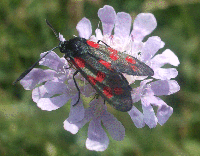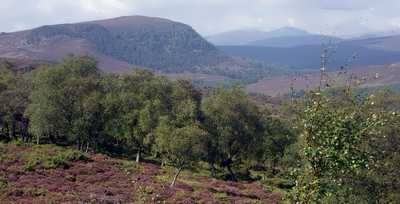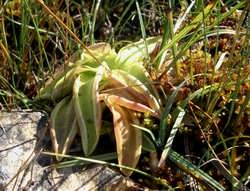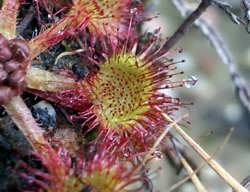When to Watch Wildlife |
J | F | M | A | M | J | J | A | S | O | N | D | Search |
|
Current wildlife highlights |
||
|
What's new on this site |
||
|
Wildlife calendar |
||
|
Plants and Animals |
||
|
Habitats |
||
|
Wildlife sites |
||
|
WWW links |
||
|
Guide Books |
||
|
||
|
© PMcS 2006 |
Mountain and moorland |
||||||||||||||||
|
Britain's uplands were once all covered in mainly broadleaf oak woodland. Along came Neolithic man (during the late 'stone' age) and cleared vast tracts for his grazing animals and in some areas for the planting of crops. The animals and the human population increased and in most places the trees never managed to return. However during the twentieth century the need for timber resulted in the planting of vast blocks of non native conifer. Before this afforestation, the mountains and moorlands had developed rich and fascinating communities of plants and animals, under the influence of sheep grazing and latterly management of heather for red grouse shooting.
As our uplands are largely on hard acidic rocks such as granite, and are found in places where it rains an awful lot, the soils become acidic, nutrient poor and often saturated with water. Along with the factor of altitude, only certain plants can cope with these conditions and hence the community that is found in such situations is quite distinctive. The trees species include scattered Scots pines (in the Scottish highlands), downy silver birch and juniper. The understory is dominated by heather (ling, bell heather and cross-leaved heath) which provides a purple patchwork when seen in flower in late summer and early autumn. The dominant grass is purple moor grass along with fescue species and matt grass where the ground is higher. In wetter and harder grazed areas rushes can dominate. Where water is a permanent feature sphagnum moss is an important element of the vegetative cover and can form vast impenetrable bogs. In these conditions exciting plants such as the insect consuming butterwort and sundew can be found and the yellow flowered bog asphodel can also be frequent.
|
||||||||||||||||
|
|
All images and text are copyright PMcS 2006



